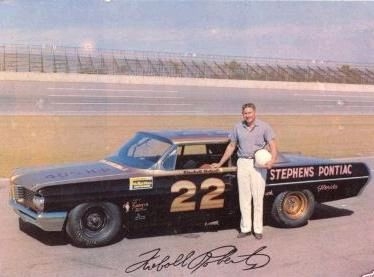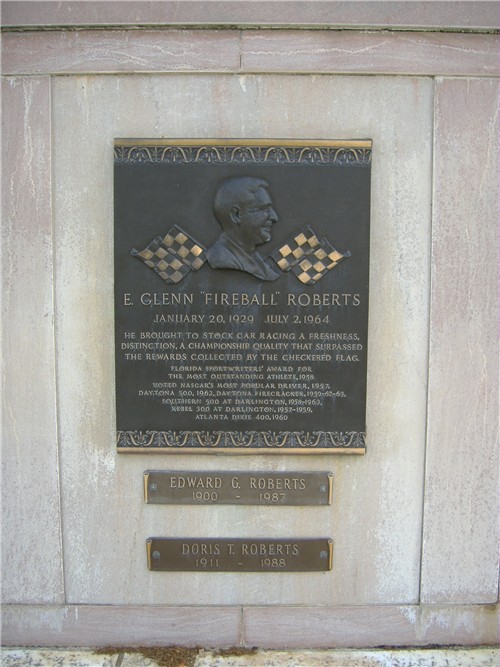-
Fireball Roberts earns his nickname
Edward Glenn "Fireball" Roberts, Jr. January 20,1929- July 2, 1964 was one of the pioneering drivers of NASCAR.
Roberts didn‚??t get his nickname "Fireball" for being a fast driver as some people think he did. He got it as a pitcher for the Zellwood Mud Hens, an American Legion baseball team in Apopka, Florida where he was raised. Thank goodness for the racing world, baseball was never his primary interest. Racing was.Never would anyone dream how prophetic his nickname was considering the circumstances that took his life. He was quoted as saying, ‚??I fear fire the most!‚?Ě after emerging uninjured from a grinding crash at Charlotte, the same track that would take his life just months later. He actually disliked the nickname and his friends knew to call him by his middle name, Glenn. Other drivers, because of his hard driving style, called him "Balls."
He attended the University of Flroida but raced on dirt tracks on weekends. In 1947 at the age of 18, he raced on the Daytona Beach Road Course for the first time. He won a 150-mile race at Daytona Beach the following year.
Roberts continued to amass victories on the circuit, despite the changes in NASCAR as it moved away from shorter dirt tracks to superspeedways in the 1950's and 1960's In his 206 career NASCAR Grand National races, he won 33 times and had 32 poles. He finished in the top five 45 percent of the time.
On May 24, 1964, at the World 600 in Charlotte, Roberts had qualified in the eleventh position and started in the middle of the pack. On lap 7, Ned Jarrett and Junior Johnson collided and spun out and Roberts crashed trying to avoid them. Roberts' Ford slammed backward into the inside retaining wall, flipped over and burst into flames. Witnesses at the track claimed they heard Roberts screaming, "Ned, help me!" from inside his car after the wreck. Jarrett rushed to save Roberts as his car was engulfed by the flames. Roberts suffered second- and third-degree burns over 80 percent of his body and was airlifted to a hospital in critical condition. Although it was widely believed that Roberts had an allergic reaction to flame-retardant chemicals, he was secretly an asthmatic and the chemicals made his breathing worse.
Roberts was able to survive for several weeks, and it appeared he might pull through, but Roberts' health took a turn for the worse on June 30, 1964. He contracted pneumonia, and sepsis and slipped into a coma by the next day. He died on July 2 1964.
Roberts' death, as well as the deaths of two drivers at the Indy 500 the same year, led to an increase in research for fire-retardant uniforms. It also led to the development of the Firestone RaceSafe fuel cell, and all race cars today use a foam-backed fuel cell to prevent severe fuel spillage of the massive degree that Roberts had. Also, fully fire-retardant coveralls would be phased in leading to the now mandatory Nomex racing suits.




 Posting Permissions
Posting Permissions
- You may not post new threads
- You may not post replies
- You may not post attachments
- You may not edit your posts
-
Forum Rules







 Reply With Quote
Reply With Quote